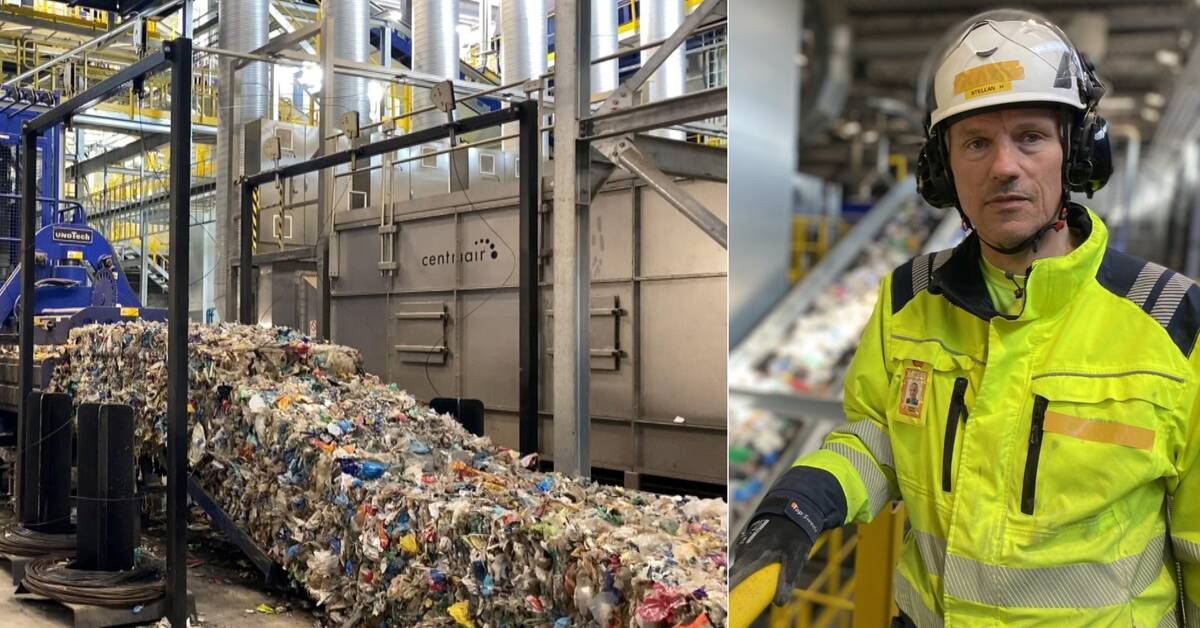- This year, we expect about 10,000 tonnes of sorted plastic, which reduces greenhouse gas emissions from the plant, says operations manager Stellan Höglund at the environmental and return company Sörab at Bristaverket, which is located in Märsta north of Stockholm.
The post-sorting plant at Bristaverket opened last year, as a complement to households 'and companies' source sorting.
Here, plastic larger than 80 mm can be removed before the waste is burned and becomes district heating.
First fully automated facility
At the Brista plant, the plastic in the rubbish is identified with the help of optical cameras.
The plastic is then separated from the waste and packed in bales, which are transported on to a material recycling plant in Motala.
In addition to plastic, food waste and metals are also sorted.
Javascript is disabled
Javascript must be turned on to play video
Read more about browser support
The browser is not supported
SVT does not support playback in your browser.
We therefore recommend that you switch to a different browser.
Read more about browser support
Three questions about sorting plastic
Reduces CO2 emissions
Even though more and more plastic is sorted at source, a lot of plastic packaging is still thrown in the household rubbish.
According to Stockholm Exergi, the plastic in Stockholm's waste contributes to carbon dioxide emissions corresponding to six months' road traffic.
But even if the plastic is sorted out instead of burned in the district heating plants, some remains before the emissions from waste incineration are fossil-free.
- When the plastic is sorted away from the waste, carbon dioxide emissions decrease from about 400 kg of carbon dioxide per tonne to 150 kg of carbon dioxide per tonne in the district heating plants, says sustainability manager Ulf Wikström at Stockholm Exergi.

